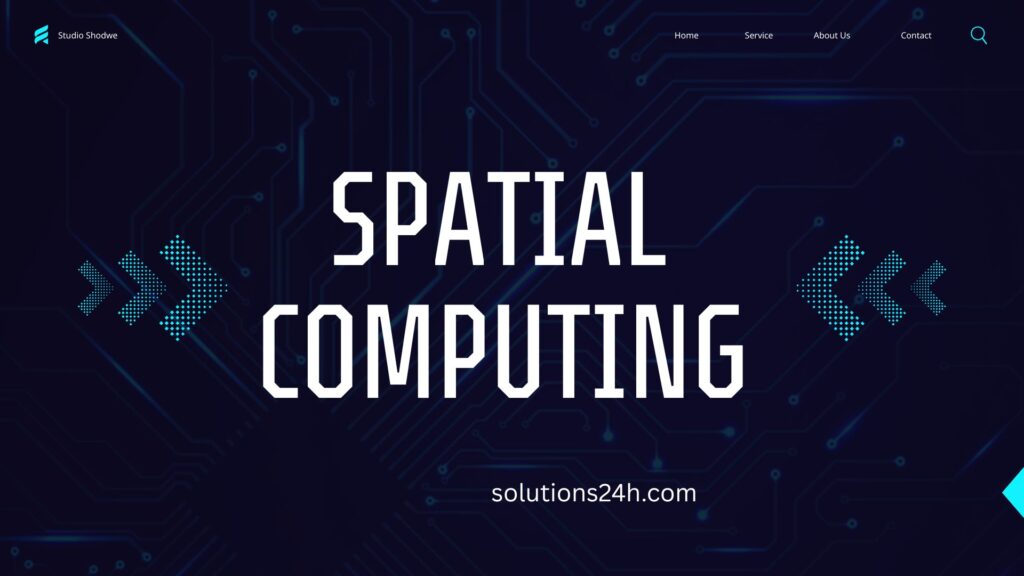What is Spatial Computing?
Spatial computing is the fusion of physical space with digital intelligence, where computers can sense, process, and interact with the 3D world like humans. It’s the backbone of technologies like augmented reality (AR), virtual reality (VR), mixed reality (MR), and extended reality (XR).
This next-gen computing framework lets digital content exist and behave as if it’s physically present, allowing immersive experiences and real-time interactions.
Why Spatial Computing Matters
Unlike traditional computing, which relies on screens and input devices, spatial computing uses:
- Sensors
- 3D Mapping (LiDAR, SLAM)
- AI & Computer Vision
- Wearables (like AR/VR headsets)
This makes interaction more natural, intuitive, and context-aware—perfect for immersive training, smart homes, or even virtual collaboration rooms.
Real-World Technology Examples
1. Apple Vision Pro
Apple’s mixed reality headset enables users to interact with floating apps, immersive video, and digital elements within their physical environment—all powered by spatial computing.
2. Microsoft HoloLens 2
Used in industries like healthcare and manufacturing, it overlays digital models and instructions onto real-world machinery or patients—enhancing precision and productivity.
3. Digital Twins in Smart Cities
Cities like Singapore use spatial computing to create digital replicas of buildings, traffic systems, and infrastructure for better planning, monitoring, and disaster management.
4. Niantic Lightship (AR Platform)
Niantic’s platform allows developers to build real-time multiplayer AR experiences that are aware of the physical environment—like Pokémon Go on steroids.
5. Spatial Computing in Healthcare
Hospitals are leveraging spatial mapping and AR to plan surgeries, visualize internal organs, and conduct remote assistance with real-time 3D visuals.
Top Industries Using Spatial Computing
| Industry | Application Example |
|---|---|
| Healthcare | 3D surgery planning, remote diagnostics |
| Education | Virtual labs, interactive anatomy |
| Retail | Virtual try-ons, spatial product placement |
| Manufacturing | Smart factories, hands-free AR instructions |
| Architecture | Walkthroughs of 3D building blueprints |
| Defense | Immersive training and mission simulations |
Benefits of Spatial Computing
- Real-time decision-making
- Higher accuracy in tasks
- Enhanced collaboration in virtual spaces
- Reduced training time and costs
- Richer customer engagement through AR/VR
The Future of Spatial Computing
With devices like Apple Vision Pro, Meta Quest 4, and humanoid robots using GPT-like intelligence, spatial computing will soon be integrated into daily life, from virtual desktops to spatial gaming, smart homes, and holographic meetings.
Final Thoughts
Spatial computing isn’t just a buzzword—it’s a technological evolution that is bridging the gap between physical and digital experiences. As hardware improves and AI gets smarter, expect spatial computing to power the next era of human-computer interaction.



